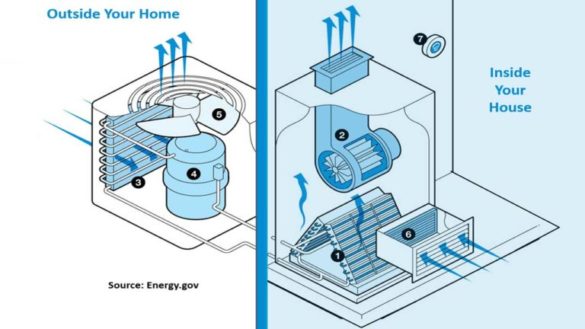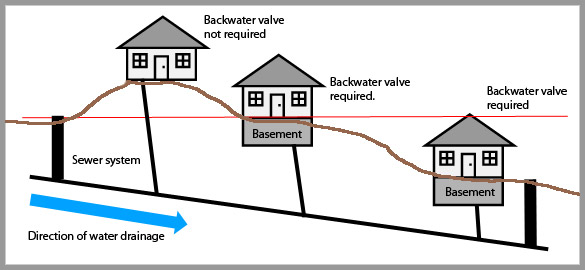In this article down the page you can get a bunch of wonderful help and advice all about Understanding Your Home's Plumbing Anatomy.

Comprehending just how your home's pipes system works is vital for every single property owner. From providing clean water for alcohol consumption, food preparation, and bathing to securely getting rid of wastewater, a well-maintained plumbing system is important for your family members's health and convenience. In this extensive overview, we'll check out the complex network that comprises your home's pipes and deal pointers on maintenance, upgrades, and managing usual concerns.
Introduction
Your home's plumbing system is more than simply a network of pipelines; it's a complicated system that guarantees you have accessibility to tidy water and effective wastewater elimination. Recognizing its parts and just how they interact can aid you protect against pricey fixings and make certain whatever runs smoothly.
Basic Elements of a Pipes System
Pipelines and Tubing
At the heart of your plumbing system are the pipelines and tubes that bring water throughout your home. These can be made from different products such as copper, PVC, or PEX, each with its benefits in regards to durability and cost-effectiveness.
Fixtures: Sinks, Toilets, Showers, etc.
Fixtures like sinks, toilets, showers, and bathtubs are where water is made use of in your house. Recognizing exactly how these fixtures attach to the pipes system helps in detecting problems and planning upgrades.
Shutoffs and Shut-off Points
Shutoffs regulate the flow of water in your plumbing system. Shut-off shutoffs are critical throughout emergencies or when you require to make repair services, enabling you to isolate parts of the system without interfering with water flow to the entire residence.
Supply Of Water System
Key Water Line
The primary water line connects your home to the municipal water system or a private well. It's where water enters your home and is distributed to numerous fixtures.
Water Meter and Stress Regulator
The water meter measures your water use, while a pressure regulatory authority ensures that water moves at a safe stress throughout your home's plumbing system, protecting against damage to pipelines and fixtures.
Cold Water vs. Warm water Lines
Comprehending the difference in between cold water lines, which provide water directly from the primary, and warm water lines, which carry warmed water from the water heater, aids in fixing and preparing for upgrades.
Drain System
Drain Pipeline and Traps
Drain pipelines carry wastewater far from sinks, showers, and commodes to the drain or septic tank. Traps prevent drain gases from entering your home and likewise trap particles that could trigger obstructions.
Ventilation Pipelines
Ventilation pipelines allow air right into the drainage system, stopping suction that could slow down drainage and cause traps to vacant. Proper air flow is important for keeping the integrity of your pipes system.
Relevance of Proper Drainage
Ensuring appropriate drain prevents backups and water damages. Frequently cleansing drains and keeping traps can avoid expensive repair services and prolong the life of your pipes system.
Water Furnace
Sorts Of Hot Water Heater
Hot water heater can be tankless or typical tank-style. Tankless heating systems warm water as needed, while tanks keep heated water for prompt usage.
Updating Your Pipes System
Factors for Updating
Updating to water-efficient components or changing old pipelines can boost water top quality, lower water costs, and increase the value of your home.
Modern Pipes Technologies and Their Advantages
Discover modern technologies like clever leakage detectors, water-saving commodes, and energy-efficient hot water heater that can conserve cash and reduce environmental impact.
Price Factors To Consider and ROI
Compute the ahead of time expenses versus long-lasting cost savings when thinking about pipes upgrades. Many upgrades pay for themselves through reduced energy expenses and fewer repairs.
How Water Heaters Attach to the Pipes System
Recognizing exactly how water heaters link to both the cold water supply and hot water distribution lines helps in diagnosing issues like not enough warm water or leaks.
Upkeep Tips for Water Heaters
Consistently purging your hot water heater to eliminate sediment, checking the temperature setups, and evaluating for leakages can extend its life expectancy and boost power effectiveness.
Common Pipes Concerns
Leakages and Their Causes
Leakages can take place because of aging pipelines, loose fittings, or high water pressure. Addressing leakages without delay protects against water damages and mold and mildew development.
Blockages and Obstructions
Blockages in drains and toilets are commonly caused by flushing non-flushable items or a buildup of oil and hair. Utilizing drain screens and being mindful of what drops your drains pipes can stop obstructions.
Indicators of Plumbing Troubles to Watch For
Low water stress, sluggish drains, foul odors, or unusually high water bills are indicators of prospective plumbing issues that should be attended to quickly.
Pipes Upkeep Tips
Routine Assessments and Checks
Schedule yearly pipes inspections to capture problems early. Look for indicators of leaks, corrosion, or mineral accumulation in faucets and showerheads.
Do It Yourself Maintenance Tasks
Straightforward tasks like cleansing faucet aerators, looking for bathroom leaks using color tablets, or protecting exposed pipelines in cold climates can prevent significant plumbing problems.
When to Call a Professional Plumbing
Know when a pipes problem requires expert knowledge. Trying complex repair work without correct understanding can lead to more damages and higher fixing costs.
Tips for Lowering Water Usage
Straightforward practices like repairing leaks immediately, taking much shorter showers, and running complete loads of laundry and meals can conserve water and lower your energy expenses.
Eco-Friendly Pipes Options
Consider sustainable plumbing materials like bamboo for flooring, which is durable and green, or recycled glass for kitchen counters.
Emergency situation Readiness
Actions to Take Throughout a Pipes Emergency situation
Know where your shut-off valves lie and how to switch off the water supply in case of a burst pipe or significant leak.
Significance of Having Emergency Situation Calls Convenient
Keep get in touch with details for local plumbing professionals or emergency services easily offered for fast response during a pipes crisis.
Environmental Impact and Preservation
Water-Saving Components and Appliances
Installing low-flow faucets, showerheads, and bathrooms can substantially minimize water usage without compromising performance.
DIY Emergency Fixes (When Applicable).
Temporary solutions like making use of duct tape to patch a leaking pipe or placing a pail under a trickling faucet can reduce damage until a professional plumber gets here.
Final thought.
Comprehending the anatomy of your home's plumbing system empowers you to maintain it properly, saving time and money on repair work. By following routine maintenance routines and staying informed concerning modern-day pipes modern technologies, you can guarantee your pipes system operates effectively for years to come.
HOW YOUR PLUMBING SYSTEM WORKS
Which Pipes Do What?
Blue lines = fresh water supply entering the building Red lines = hot water supply entering the building Grey lines = pipes carrying waste away from the building and venting pipes carrying gases away from the building (through the roof) YOUR MAIN PLUMBING SYSTEMS
There are two main plumbing systems that support your home s basic plumbing needs one that brings clean water into your home, and one that sends dirty water away from your home. Connected to the toilet, bath, shower, and other faucets in your home, these two systems keep your water flowing in the right directions.
ACCESSING FRESH WATER
Fresh and clean water is brought into your home through the main water supply line . Filtered through one pipe, this water is pressured to flow into the various fixtures in your home at any given time.
This water can be sourced from a well located on your property, a pond or river (mostly cottages), or, as in most cases, from the city s municipal water treatment centre. However, it is important to note that water that is untreated, such as the water siphoned from ponds or rivers, may not be safe to drink. Personal water supplies always need to be treated for hardness and contaminants before consumed.
MUNICIPAL WATER SUPPLIES
Improve taste and odour Remove sediment Eliminate hardness Reduce chlorine COLD WATER SUPPLY VS. HOT WATER SUPPLY
Cold water flows into your home or building through the service line, which then distributes hot or cold water to your fixtures. This line is most commonly run through a central column that runs floor to floor. Hot water runs in short and straight pipes as the longer the pipeline, the more heat that will be lost in the transfer. Having shorter pipes also allows residents to access hot water more quickly.
WASTE WATER SYSTEM
Your wastewater system is divided into two parts pipes that send wastewater away from your home and venting pipes that send sewer gas away from your home. Sewage water travels through pipes that flush the water and waste towards local sewers that are operated and managed by your city or town. Most sewer systems rely on gravity to move the wastewater to where it needs to go.
The further away from your toilet or sink, the larger wastewater pipes become. This allows for waste to be disposed of from various parts of your home or business at once without pipe blockages. The angle and flow of these pipes are also essential for keeping your waste pipes clear of build up.
https://harrisplumbing.ca/how-your-home-plumbing-system-works/

I recently found that article about Plumbing Installation 101: All You Need to Know while surfing around the web. Are you aware of somebody else who is occupied with The Inner Workings of Your Home's Plumbing? Take a moment to share it. Thanks a lot for taking the time to read it.
Click For More Information